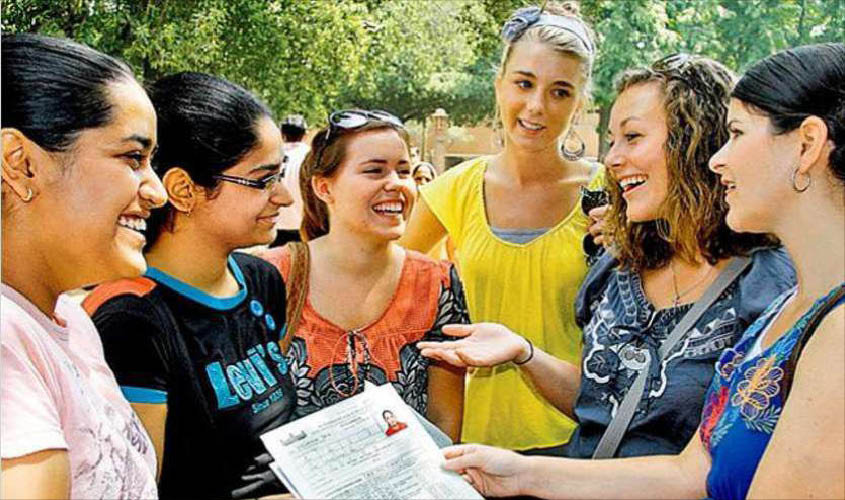NEW DELHI: With India going big on its “soft power” in the international arena, it plans to widen its ambit beyond Yoga and art and culture and take it to the Indian universities. The idea is to attract a larger number of foreign students to India and encouraging them to take up technical and vocational courses in the country. And in order to attract students from around the world, the government is also considering offering complimentary courses like Yoga, music, Sanskrit and classical dance, along with technical subjects like engineering, medical and management in different streams.
The government has set the target of increasing the number of foreign students in India to at least 2 lakh by 2023; it is nearly 46,000 at present. To execute the plan, the Narendra Modi-led government has set up an inter-ministerial group to chalk out an action plan and suggest ways to increase the number of foreign students in Indian educational institutions. The first brainstorming sitting of the group will be held in Pune on 16-17 January 2020. The inter-ministerial group will have representation from the Ministry of Home Affairs, Ministries of External Affairs, HRD, Health and Aaayush, Culture and Tourism, among others.
Experts said that the foreign students in India have largely been attracted by unstructured and non-technical subjects like Yoga, music and culture; various classical dance forms also attract foreign students, but rarely have they shown interest in taking up technical subjects in India. Dr Vinay Sahasrabuddhe, president of the Indian Council for Cultural Relations (ICCR), said: “India has some world-class technical institutes like the IITs and the IIMs, but the number of foreign students in these institutes is negligible. We aim at having bright students from around the world in these centres and other Indian universities. This will serve the twin purpose of giving them quality education as well as instilling a bond for India. Our education system can be a big source of India’s growing soft power globally.”
In a representation to the Niti Aayog, the ICCR has also suggested offering foreign students a liberal combination of courses like Yoga with engineering so as to meet their desires. “Universities offering a combination of courses such as management and classical music, engineering and Yoga should be set up. This will offer foreign students the flexibility of taking up subjects of their choice,” Sahasrabuddhe said.
According to a UNESCO Institute of Statistics report, India has emerged as a preferred destination for students from the South Asian countries, but the Modi government is seeking to attract a large cohort of students from the United States and a host of European countries. At present, India receives maximum students from countries like Nigeria, Ethiopia, Afghanistan and Nepal.
Globally, India ranks 26th in the list of destination countries for foreign students while it stands at the second spot in terms of source countries, i.e. the countries sending its students abroad for studies. According to the UNESCO report, as many as 3.06 lakh Indian students have been studying in different countries.
An All India Survey on Higher Education conducted by the Ministry of Human Resource Development says that the number of foreign students in India went up by almost 65% from 16,000 in 1977-78 to 46,144 in 2017-18. However, the situation has become grim in the last one decade as the number of foreign students has grown by less than 2% per year since 2007-08. Similarly, an assessment by the Reserve Bank of India (RBI) says that the spending of foreign students in India has declined from $557 million in 2015-16 to $479 million in 2017-18. On the contrary, the spending of Indian students abroad has gone up from $1.9 billion in 2013-14 to $2.8 billion in 2017-18.
According to the MHRD survey, there are 757 universities, 38,056 colleges and 11,922 stand-alone institutions in India, but only about 100 universities and a few institutes are attracting foreign students. The ICCR has also suggested setting up a single-agency workforce on this mandate. It has also proposed setting up “Exclusive Education Zones” on the lines of “Exclusive Economic zones” where single-window operating system could be created. Apart from offering niche courses, the ICCR has suggested new courses and institutions in the Aayush sector as well as setting up a university of performing and visual arts offering degrees and structured courses in these streams.

